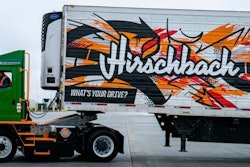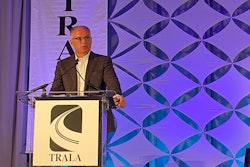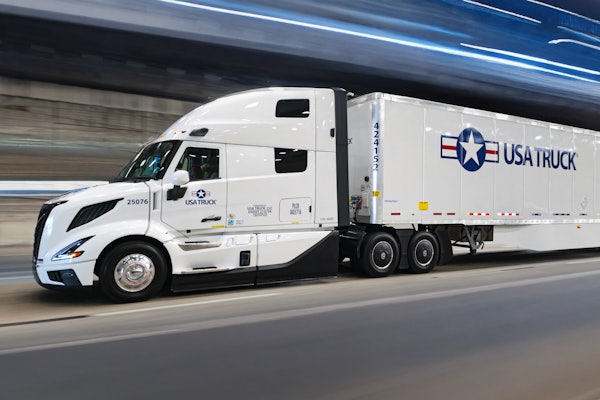Decisions, decisions, decisions.
We face technology choices all the time. Any of these choices ring a bell? Eight track tapes or cassettes? VHS or Beta? Apple or IBM? Android or iOS? Great taste or less filling? LNG or CNG? Day cab or sleeper? Rail or truck? Battery or fuel cell?
Kenny Rogers' The Gambler lyrics are stuck in my head; “Know when to hold ‘em, know when to fold ‘em, know when to walk away, know when to run.”
With technology, getting from where we are to where we want to be is never as simple as Nike’s motto, "Just Do It!" We have to first answer the question, "Just Do What?" That question is made much more difficult by multiple choice answers. Throw in that these answers have some time dependency and the question becomes “Just Do What When?
Cummins appears to be taking the approach of Just Do Everything in a relentless search for future market share in an increasingly OEM-vertically-integrated domestic-centric market. Media coverage of Cummins includes evolving traditional diesel engines, CNG engines, fuel agnostic engines, battery electric powertrains, fuel cell powertrains, and various hybrid combinations of these technologies and more.
Cummins is positioning for what NACFE calls the messy middle: the transitionary period we are entering between traditional fossil fueled trucks and a zero-emission future. Covering all the bases is easier if there are only four of them, but trucking’s baseball diamond is growing rapidly into an increasingly complex polygon. Come to think of it, maybe that’s the solution to baseball’s challenge to be more appealing beyond just adding the pitching clock: add alternative bases.
Cummins' growing portfolio of solutions to help move trucks down the road reflects the challenges facing the industry. None of the paths forward are sure bets. Vertically integrated truck manufacturers like Paccar, Volvo and Daimler Truck North America are facing the same challenges as they all are looking in their crystal balls and wondering where the market really is going?
Capital investment planning is a complex and often messy ordeal at companies. Project managers compete with each other for funding, each trying to show why their project should be a priority. There is a predetermined amount of cash to work with each year. Funding every new technology means each may get a smaller share of the pie, potentially limiting what can be accomplished. Poor choices may take years to appear.
Manufacturers with existing product lines to support have it tough, as some of the capital must be allocated to maintaining sales. This is where startups have a slight advantage. Having no existing model lines or technologies to support, all their capital can go into new product development.
Doing everything for everybody may mean that everyone is happy, but could also mean everyone is unhappy. Ultimately decisions need to be made on which projects get priority funding and which are placed on the shelf for future reconsideration or just outright dropped.
Choosing not to build a technology is always an option. This decision was made by Caterpillar in 2008 in a reaction to the need for further diesel engine investment to remain compliant. Over the course of several years, they fully exited the heavy-duty on-highway market.
I believe the choice to abandon a technology is at the heart of the challenge facing truck manufacturers and powertrain suppliers in the face of increasingly stringent emissions requirements for North American and European trucks. I think OEMs are probably dreading the time where they have to make the decision to stop producing diesels. Some OEMs have gone as far as to state future dates when their products will be net zero emitters. Time will tell how accurate those goals are. It can be challenging to switch gears from established products and customer base.
Flashback to the 1930s and 1940s when coal-powered steam trains ruled freight and passenger transport. A number of train manufacturers were trying everything they could think of to continue to use steam power through burning fossil fuels. They transitioned from burning coal to burning oil, looked at a variety of ever larger steam engines, and even built turbine-powered steam engines. Ultimately the diesel-electric engine captured the market as a much more flexible, less costly to operate and maintain solution. In less than 20 years, the entire steam power train industry was relegated to museums and history.
I often wonder what it would have been like working at a steam train manufacturer in the 1940s, wondering just how to prevent the inevitable. Grasping at every conceivable straw to stay relevant against the emerging diesel-electric technology. Major railway companies — the fleet customers of their day — were also watching the evolving market and scrambling. In that same time frame, passenger aircraft technology took off with the jet engine, eventually minimizing train passenger service to what we have today. Throwing more fuel on that train fire, that same period saw the development of the national highway system and the explosion of diesel trucking took a major share of rail freight.
We are at the cusp of major technological changes to freight. It is fair for the guardians of the prior freight movement technologies to keep trying to evolve them in the face of competing new ones, but it is also prudent to plan for when the road for those technologies ends, and to have the foresight to know when to switch horses.
Where will OEM investment dollars go? Will they spread them out evenly among all the competing technologies or choose to focus on just a few? How much will they put into life support for existing product lines that may not have a place in the future? Are there lessons to be learned from the past?











